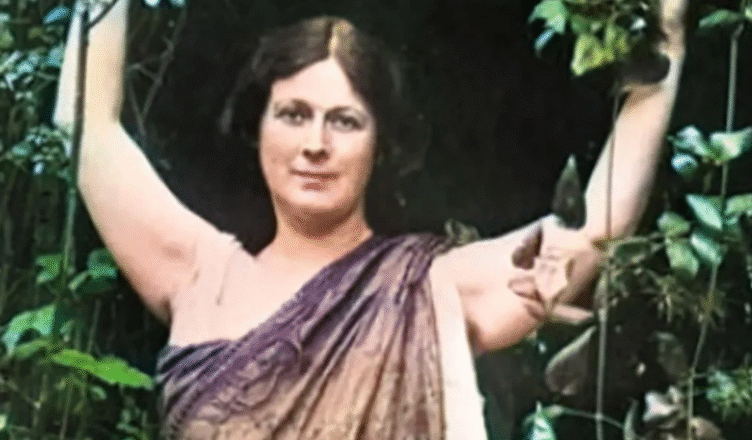If you think your life is one big drama, meet Isadora Duncan.
This woman managed to cram so much into one life that even Santa Barbara writers would weep with envy. She danced barefoot when it was considered scandalous, dropped out of school at 13 (a trend ahead of its time), and had an uncanny gift for turning personal tragedy into art.

Childhood Rebel: How to Drop Out of School in Style
At an age when most kids are still wondering what to wear to school, Isadora had already decided that education was a waste of time. At 13, she told her parents, “School? No thanks, I’ll be better off without it!” And you know what? She was right—though today, teachers and parents might disagree.
Instead of algebra and geography, Isadora chose music and dance. And it wasn’t just a hobby—it was a revolution. She danced in such a way that the audience couldn’t get up from their seats. Isn’t that every performer’s dream?
Fashion Revolution: When Bare Knees Shocked the World
Imagine a time when showing your knees in public was worse than walking down a red carpet in pajamas today. Isadora took to the stage in a short tunic in the style of ancient Greece and… barefoot! Barefoot, people! At the time, it was a scandal of epic proportions.
But what is most interesting? No one dared to call her dance vulgar. She was so talented that even the harshest critics had to admit – it was art, not provocation. Although, let’s be honest, there was a bit of both in it.

Romantic Adventures: A Collection of Broken Hearts
If there were a championship of complicated relationships, Isadora would easily be in the top three. Her love life was a series of affairs that ended in betrayal, tragedy—or both.
First there was Ivan Miroski, a poor, bearded and already married Pole. Then Oscar Beregi, who chose career over love a week before the wedding (a classic). Next came Gordon Craig, who fathered her daughter, only to marry someone else. And finally, millionaire Paris Singer, son of a famous sewing machine magnate.
Each romance brought her children and heartbreak. But more importantly, it brought her the inspiration to dance.

A Mother’s Heart: Raising 40 Children—Why Not?
After losing her two biological children in a tragic car accident, Isadora didn’t break down. Instead, she did what only a true superhero would do: she adopted six girls and raised another forty as if they were her own.
All this while touring the world, opening dance schools, and still finding time to fall in love. Where she found the energy remains a mystery of cosmic proportions.

Yesenin: When age difference and language barriers don’t matter
Eighteen years of age difference, a language barrier, and completely opposing personalities—what could possibly go wrong? Isadora fell in love with Sergei Yesenin at first sight, saying he reminded her of her deceased son. Romantic? Maybe. Healthy? Doubtful.
At first, it was like a fairy tale — she called him “Sergei Alexandrovich” and he promised to marry her in a small church. But then… it turned into what we would now call a toxic relationship.
Yesenin threw his shoes at her. She caught them and, through tears, said, “Sergei Alexandrovich, I love you…” It was so dramatic, even for the early 20th century, that it seemed over the top. But hey, what else could you expect from a Russian poet?
The Money Paradox: Rich and Poor at the Same Time
Here’s Isadora’s take on math: Make a fortune, then spend it faster than you make it—mostly on dance schools. As one of the most famous dancers in the world, she was always broke and borrowing from friends.
And when she was offered a huge sum—300,000 francs!—for her memories of Yesenin after his death, she refused. Instead, she asked that the money be given to his mother and sisters. Noble? Absolutely. Practical? Not necessarily.
Strange ending
Isadora had always hated cars and predicted that one of them would be the end of her. Well, it was — but in a way that even Hollywood writers couldn’t imagine.
On September 14, 1927, in Nice, after performing her famous “Scarf Dance,” she got into a car with a young Italian (her last love at the age of 50), elegantly threw a red scarf around her neck and said, “Farewell, my friends, I am going to glory!”
Those were her last words. The scarf got caught in the wheel and it was all over in an instant. The crowd that rushed to the scene began tearing the scarf into souvenirs — believing that belongings to someone who died of suffocation would ensure a long life.
